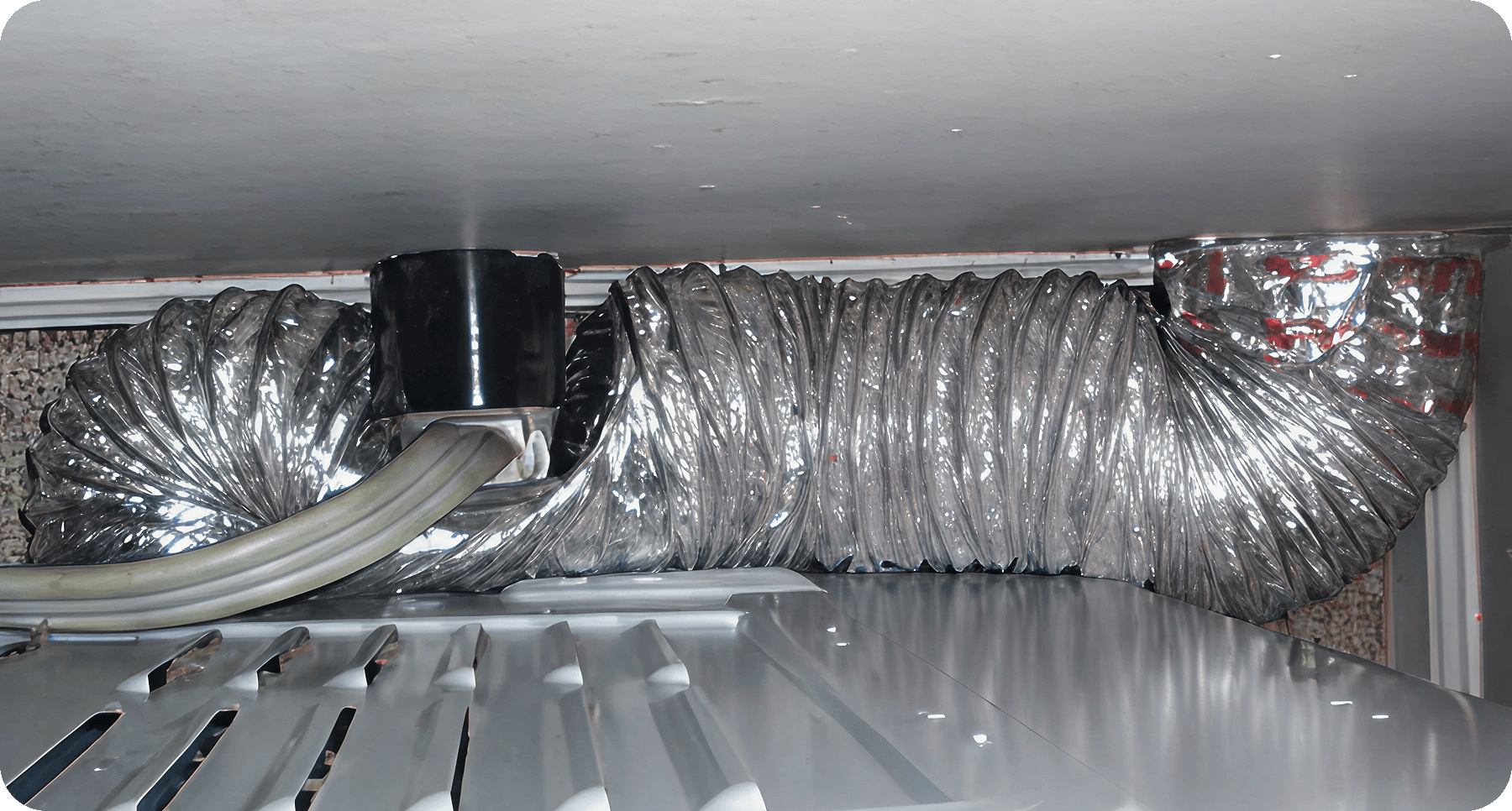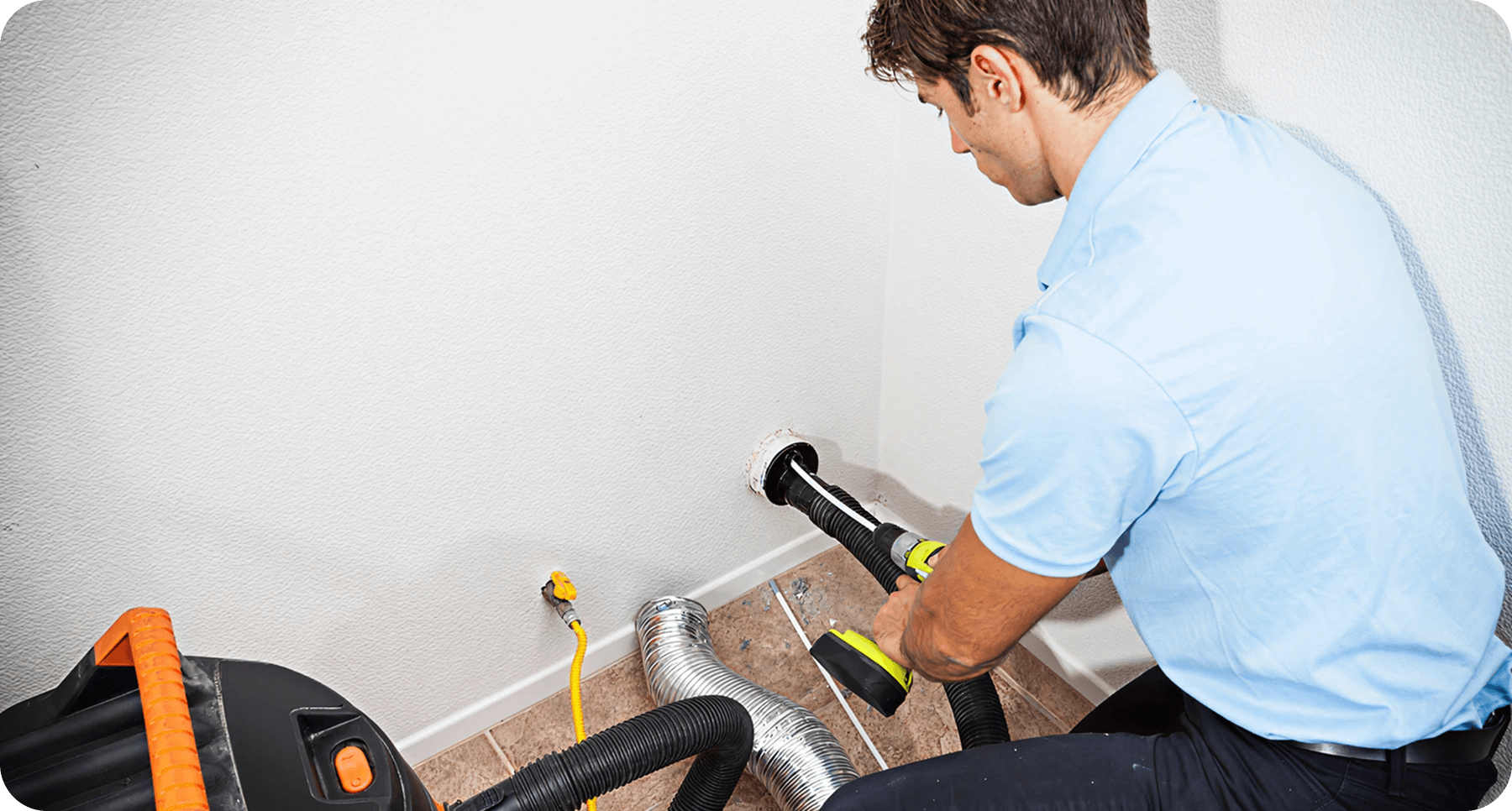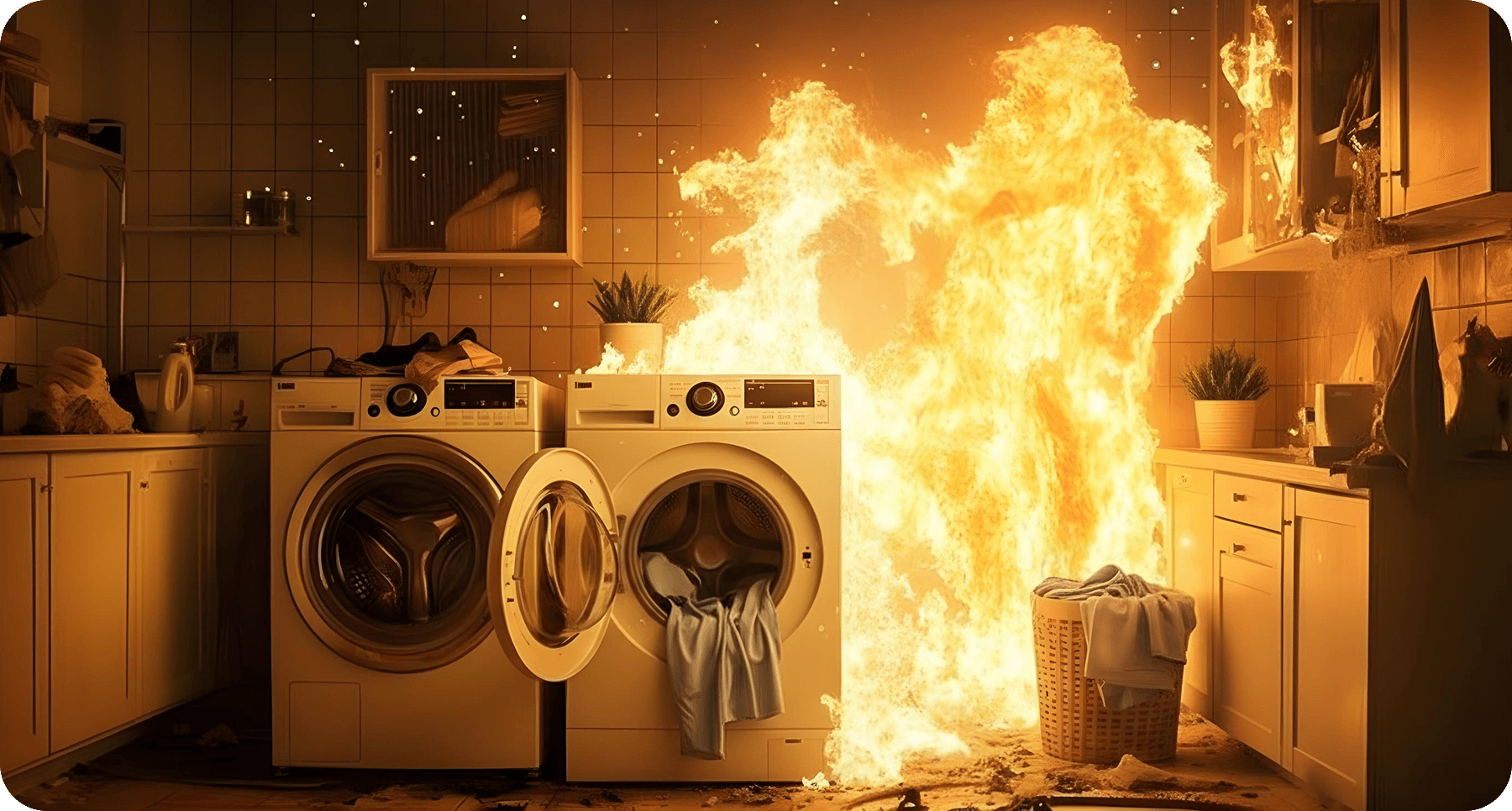It’s an appliance we use every day without a second thought, but your clothes dryer could be hiding a serious fire risk. At Mose Home Inspection, we believe home safety starts with awareness, and this is one area that is too often overlooked.
While it might sound unlikely, many homes contain dryer vents made from highly flammable materials, often clogged with lint—a perfect recipe for a devastating fire waiting for a single spark.
During the winter, when outdoor clotheslines are a distant memory, our dryers work overtime. Heavy fabrics like wool and fleece shed significant amounts of lint. While the filter inside your dryer catches most of it, a surprising amount escapes into the vent pipe. Over time, this lint accumulates and creates a dense, highly combustible blockage.
In the United States, clothes dryers are linked to approximately 17,000 house fires each year. While Canada doesn’t track this specific statistic, our heavy winter reliance on dryers means the risk is just as significant.

Hazardous Dryer Vent Materials to Avoid
A proper inspection of your dryer vent starts with identifying the material it’s made from. If you see either of the following, they should be replaced immediately. If you need to hire a professional for the job, make sure you know how to select a reputable home contractor.
🚫 Flexible Vinyl Tubing: This white, ribbed plastic tubing is a major hazard. It was originally designed for bathroom exhausts, not the high heat of a clothes dryer. The plastic can easily melt or ignite when temperatures rise, and its ribbed design traps lint at an accelerated rate, increasing the blockage risk.
🚫 Mylar Foil Tubing: This shiny, flexible ducting may look metallic and safe, but it is not approved for dryer use. The thin foil is highly flammable and can quickly catch fire, despite its appearance.
The Gold Standard: Safe Dryer Vent Materials
For maximum safety and efficiency, your dryer should be vented with materials that meet building code standards.
✅ Rigid Aluminum or Steel Ducting: Recommended by the International Residential Code (IRC), these are the safest options. The ducts should be made of metal at least 0.016” thick with a smooth interior. This smooth surface prevents lint from snagging and allows for easy cleaning. For optimal performance, the total vent length should be kept under 10 feet (3 metres).


Warning Signs: When Your Dryer Vent Needs Immediate Attention
Your dryer will often give you clues that its vent is clogged and becoming a danger. If you notice any of the following, it’s time to take immediate action:
- Extended Drying Times: Clothes take longer than one cycle to dry or come out still damp.
- Excessive Heat: The dryer itself or the clothes inside feel unusually hot to the touch after a cycle.
- Stuck Vent Flap: The exterior vent flap on the outside of your house doesn’t open fully when the dryer is running.
- Frequent Cycling: The dryer cycles on and off more frequently as its internal sensors detect overheating.
- Pro Tip: You should inspect and clean your dryer vent at least once a year. If you notice any of these warning signs, clean it sooner.

Your Dryer Fire Prevention Checklist
Regular maintenance is key to preventing a dryer fire. Follow this checklist to keep your home safe:
- Inspect & Clean: Regularly check for lint buildup inside the vent pipe and around the exhaust flap outside your home.
- Upgrade Materials: If you have vinyl or foil ducts, replace them immediately with rigid aluminum or steel.
- Ensure Electrical Safety: Make sure the dryer is plugged into a properly rated outlet and that the cord is in good condition.
- Avoid Hazardous Loads: Never put items contaminated with flammable substances like oils, solvents, or wax in the dryer—even if they have been washed.
- Repair Damage: Replace any torn lint screens or cracked exhaust vents right away.
- Maintain the Vent Flap: Ensure the outside vent flap can open and close freely and isn’t blocked by snow, ice, or landscaping.
- Clear the Area: Keep combustible materials like laundry piles, boxes, and cleaning supplies away from your dryer. Consider installing a smoke detector in the laundry room for added protection.



